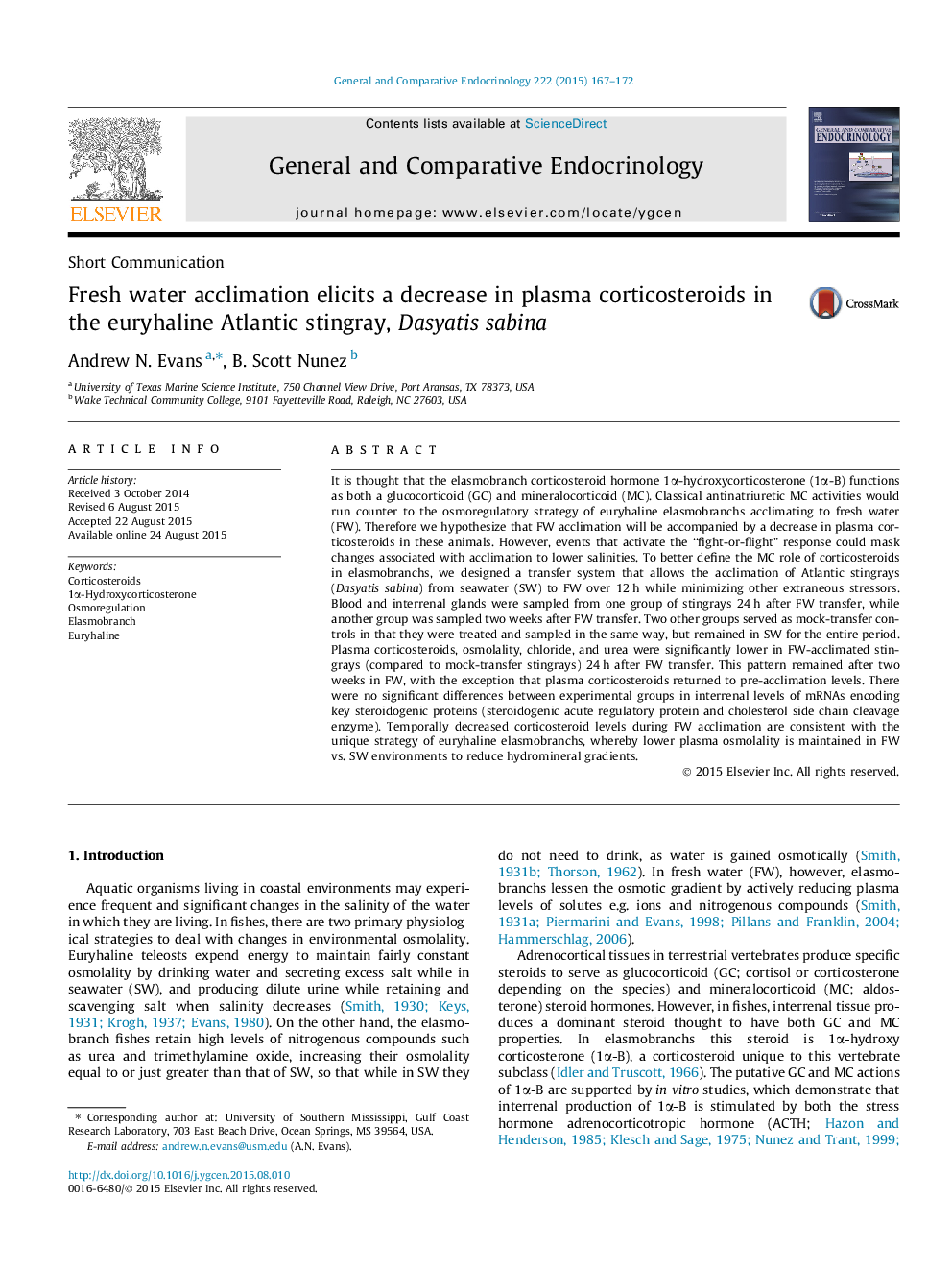| Article ID | Journal | Published Year | Pages | File Type |
|---|---|---|---|---|
| 5900935 | General and Comparative Endocrinology | 2015 | 6 Pages |
â¢We examined corticosteroids and salinity acclimation in a euryhaline stingray.â¢Plasma corticosteroids transiently decreased during acclimation to fresh water.â¢Excellent model for the endocrinology of stress vs. osmoregulation in elasmobranchs.
It is thought that the elasmobranch corticosteroid hormone 1α-hydroxycorticosterone (1α-B) functions as both a glucocorticoid (GC) and mineralocorticoid (MC). Classical antinatriuretic MC activities would run counter to the osmoregulatory strategy of euryhaline elasmobranchs acclimating to fresh water (FW). Therefore we hypothesize that FW acclimation will be accompanied by a decrease in plasma corticosteroids in these animals. However, events that activate the “fight-or-flight” response could mask changes associated with acclimation to lower salinities. To better define the MC role of corticosteroids in elasmobranchs, we designed a transfer system that allows the acclimation of Atlantic stingrays (Dasyatis sabina) from seawater (SW) to FW over 12 h while minimizing other extraneous stressors. Blood and interrenal glands were sampled from one group of stingrays 24 h after FW transfer, while another group was sampled two weeks after FW transfer. Two other groups served as mock-transfer controls in that they were treated and sampled in the same way, but remained in SW for the entire period. Plasma corticosteroids, osmolality, chloride, and urea were significantly lower in FW-acclimated stingrays (compared to mock-transfer stingrays) 24 h after FW transfer. This pattern remained after two weeks in FW, with the exception that plasma corticosteroids returned to pre-acclimation levels. There were no significant differences between experimental groups in interrenal levels of mRNAs encoding key steroidogenic proteins (steroidogenic acute regulatory protein and cholesterol side chain cleavage enzyme). Temporally decreased corticosteroid levels during FW acclimation are consistent with the unique strategy of euryhaline elasmobranchs, whereby lower plasma osmolality is maintained in FW vs. SW environments to reduce hydromineral gradients.
